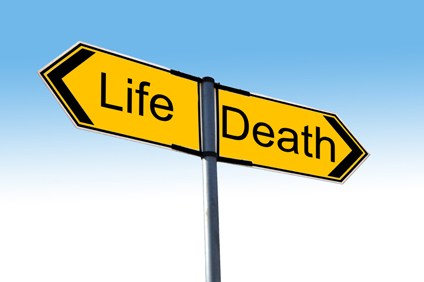I’m pretty confident that over the next several decades we will reduce the risk of childbirth in dramatic ways. After all, we understand the problems that we face; it’s just a matter of creating the technology that will provide the answers we need.
We know, for example, that the biggest threat to babies is lack of oxygen during labor. We don’t have a way of directly measuring the amount of oxygen that the baby is receiving so we are forced to approximate using existing technology, measuring the fetal heart rate instead. Because the fetal heart rate provides only an indirect, and often inaccurate, picture of fetal oxygenation, obstetricians end up performing unnecessary C-sections for presumed fetal distress that wasn’t distress at all. When we can accurately measure the amount of oxygen in the fetal blood stream, the only C-sections done for fetal distress will be necessary C-sections and the C-section rate will drop dramatically.
The history of obstetrics over the past 100 years is a history of identifying specific risks and then creating treatments to abate those risks or preventive strategies to remove the risks entirely. For example, pre-clampsia/eclampsia has always been a leading killer of mothers and babies. We still don’t understand the cause of the disease, but we do understand the warning signs and we have created treatments and preventive strategies that have dramatically decreased the death rate of pre-eclampsia/eclampsia for mothers and babies.
The evolution of obstetrics, and the dramatic decrease in death rates that have resulted, are a result of technology. In other words, the less we trust birth, and the more we trust technology, the fewer babies and women die. It is simply a matter of time before we have better technology that will help us achieve lower rates of death and injury by more accurately targeting treatments and preventive measures.
The real question for those who care for pregnant women is this: what do we do in the meantime?
When we have imperfect information, and when the lives of babies and mothers are on the line, should we err on the side of caution or err on the side of risk?
The answer to that question delineates the central difference between obstetricians and homebirth advocates. Obstetricians err on the side of caution. They’d rather do perform unnecessary tests, procedures and C-sections in an effort to prevent all preventable deaths. Homebirth advocates err on the side of risk, either by pretending there is no risk (“trust birth”), by ignoring risk (refusing routine tests and interventions), or by treating complications when they happen instead of preventing them (“the hospital is only 10 minutes away”). They’d rather risk preventable deaths than submit to anything that was unnecessary in retrospect.
When homebirth advocates lament obstetricians playing the “dead baby card,” they are making fun of doctors who would rather err on the side of caution. And they are implicitly advising women to err on the side of risk. They basically tell women to gamble the lives of their babies because the chances of disaster are relatively small.
Obstetricians are the equivalent of the people who tell you to board up your windows at the approach of a hurricane, reasoning that boarded up windows won’t break in the event that they are stressed to their limits by wind gusts. Homebirth advocates are the people who tell you not to board up your windows on the theory that you can save lots of time, effort and money by betting that your personal windows are not necessarily going to break in a hurricane, since the odds of a specific set of windows breaking is fairly low. Those who board up their windows are erring on the side of caution. Those who “trust hurricanes” are erring on the side of risk.
Obstetricians are the equivalent of the people who tell you to wear a helmet when riding riding a bicycle, reasoning that people who wear helmets are much less likely to suffer brain injuries if the motorcycle crashes. Natural childbirth advocates are the people who protest helmet laws on the theory that most of the time you won’t get into a crash and it’s so much more enjoyable to feel the wind rushing through your hair. Helmet laws err on the side of caution; those who protest helmet laws err on the side of risk.
So if you are thinking about homebirth, think about this: the day of birth is the single most dangerous day of the entire 18 years of childhood; the risk of death is never higher. Whether you wish to acknowledge it or not, childbirth puts your baby’s life on the line.
The question you need to ask yourself when contemplating the risk to your baby is:
Do you want to err on the side of caution and head to the hospital, or would you rather stay home and err on the side of risk?


